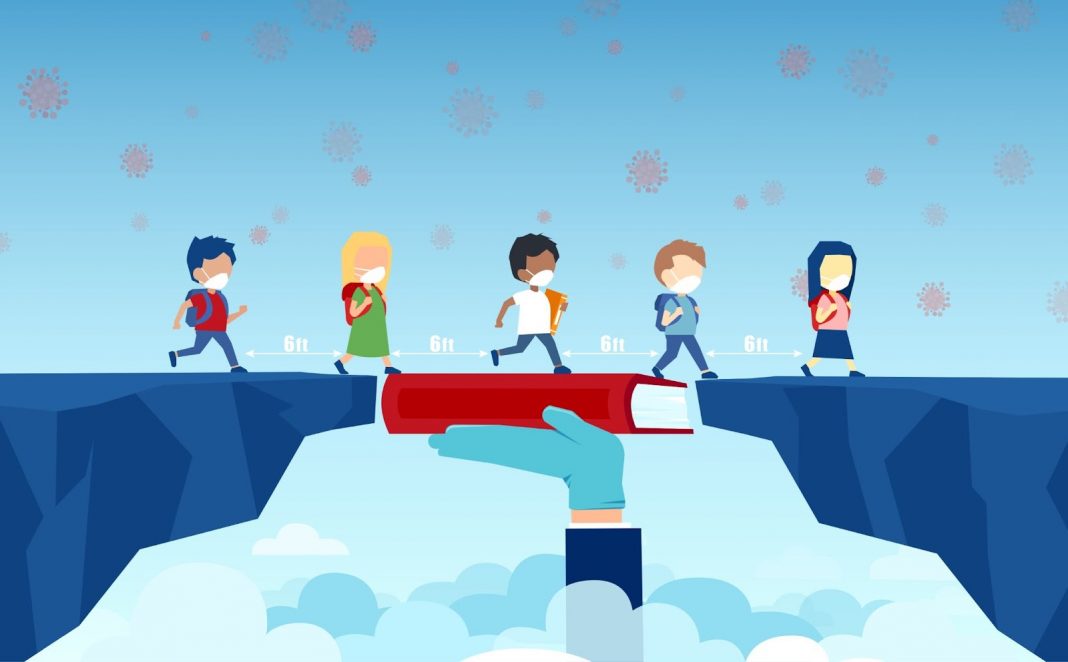Every student’s educational journey is unique, yet many encounter similar challenges, notably learning gaps. These gaps, the differences between what a student knows and should know, are a vital concern in education today. Addressing these gaps is crucial because they hinder a student’s academic progress and confidence.
Math & ELA | PreK To Grade 5
Kids see fun.
You see real learning outcomes.
Watch your kids fall in love with math & reading through our scientifically designed curriculum.
Parents, try for free Teachers, use for free
This article will explore learning gaps, the various types, and why they occur. Teachers and educators are increasingly focused on identifying and closing these gaps to ensure each student reaches their full potential. We will discuss strategies to identify and address learning gaps effectively.
What is a Learning Gap?
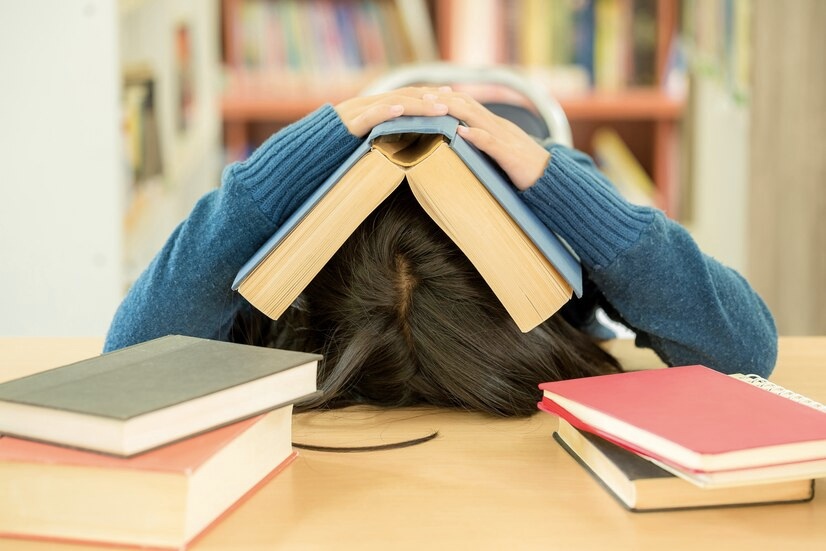
Learning gaps in education are when students haven’t learned something they should have by a certain point in their education. It’s like a missing piece in what they know or can do. Think of it as a gap between what students are expected to know and what they know at a specific time.
For example, if a third-grade student is supposed to be good at addition and subtraction but struggles with these, they have a learning gap in math. Identifying and filling these gaps is important so students can keep up with their classmates and the school curriculum.
Learning gaps can happen for many reasons and in any subject. Understanding what a learning gap is helps teachers and parents find ways to help students learn what they missed and catch up.
4 Types of Learning Gaps
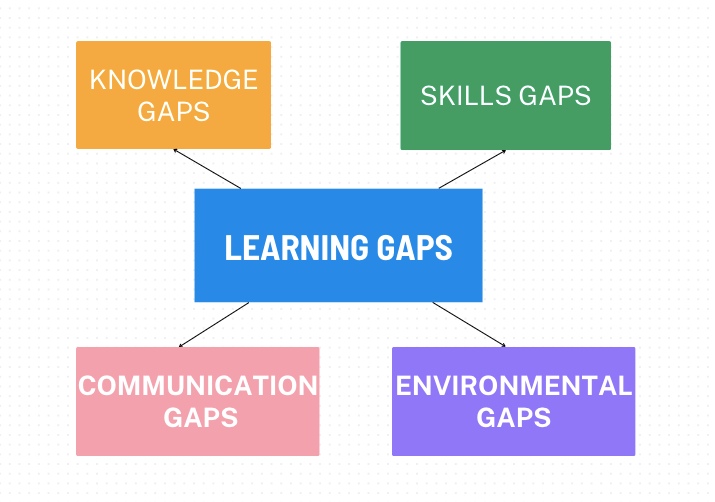
Several types of learning gaps in education can affect how well students learn. Understanding these can help in finding the right ways to help students. Here are the main types:
1. Knowledge Gaps
This is when students don’t have the information they need to understand a new topic. For example, if students haven’t learned basic multiplication, they will struggle with more advanced math like algebra. This is a common education gap focused on filling in the missing knowledge.
2. Skills Gaps
Sometimes, students know the theory but lack the practice to do things well. For instance, a student might know how to write sentences but find it hard to write a complete essay. This gap in learning is about giving students more practice to develop their skills.
3. Communication Gaps
Here, students have trouble understanding or sharing information effectively. An example is a student who understands math problems but can’t explain how they got the answer. Overcoming this gap involves teaching students how to express their thoughts clearly.
4. Environmental Gaps
This gap happens when students don’t have a good place to learn, like a quiet room or access to school materials. For example, a student might struggle to do homework if they don’t have a quiet space at home. Fixing this type of gap means creating better learning environments for students.
By recognizing these different types of gaps in learning and their examples, educators and parents can better tailor their support to meet the specific needs of each student.
How to Identify a Learning Gap?
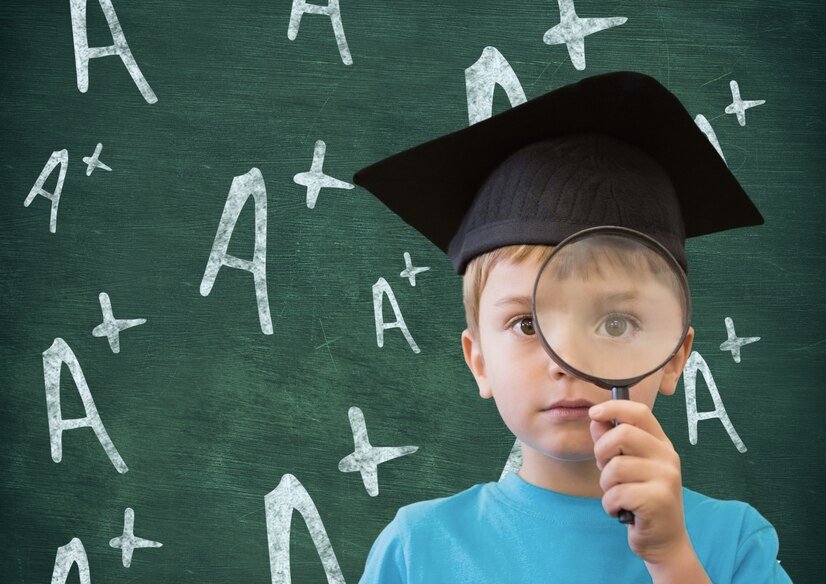
Identifying learning gaps is a crucial step in helping students. Here are some ways to do this, known as gap analysis in education:
- Assessments: Tests and quizzes can show where students are struggling. For example, if many students get the same questions wrong, it might mean a gap in their understanding of that topic.
- Observations: Teachers can watch how students act in class. Are they participating? Do they seem confused? This can be a good way to spot gaps.
- Student Feedback: Sometimes, just asking students can help. They might tell you what they find hard or don’t understand.
- Continuous Monitoring: It’s important to check how students are doing. This way, identifying learning gaps becomes an ongoing process, not just a one-time check.
- Gap Learning Method: This method involves looking at what students should know and comparing it to what they know. It helps in pinpointing exactly where the gaps are.
Early detection of these gaps is key. The sooner you know about a gap, the sooner you can start addressing learning gaps. This helps students catch up and keep up with their classmates.
How Do You Fix Learning Gaps?
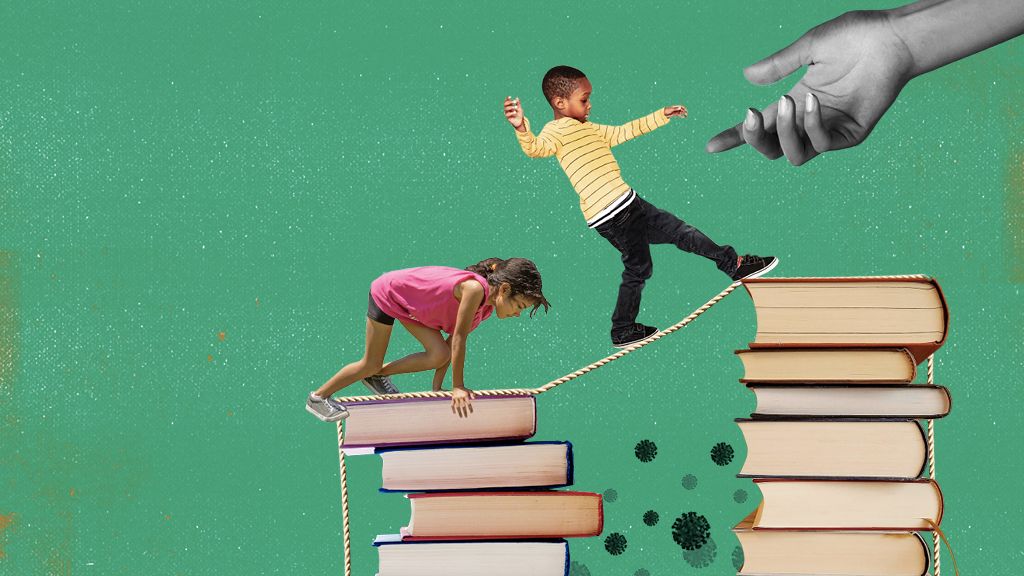
Closing learning gaps is important for helping students succeed. Here are some strategies and techniques to do this:
- Personalized Learning: This means teaching each student in a way that works best for them. For example, if a student learns better with pictures and diagrams, using more of these in lessons can help close the gap.
- Extra Support: Sometimes students need extra help, like tutoring or more practice on certain topics. This can be useful for students who are falling behind.
- Use of Technology: Many educational apps and online resources make learning fun and interactive. These can be great for practicing skills and understanding new concepts.
- Parental Involvement: When parents are involved in their child’s learning, it can make a big difference. They can help with homework, encourage reading at home, and stay in touch with teachers about their child’s progress.
- Feedback and Adjustment: Teachers should give students feedback on what they’re doing well and where to improve. They can also adjust their teaching methods based on what works best for the students.
- Collaborative Learning: Sometimes, students can learn a lot from each other. Working in groups or having class discussions can help students understand things better and fill in the gaps.
- Regular Assessment: Keep checking how students are doing. This way, you can see if your methods are working and make changes if needed.
By using these strategies, educators and parents can play a big role in addressing learning gaps and helping students get back on track.
4 Examples of Learning Gaps
To understand learning gaps better, let’s look at some examples:
- Math Gap in Elementary School: Imagine a fourth-grader who struggles with multiplication. While his classmates move on to more complex problems, he’s still trying to understand the basics. This is a learning gap in math.
- Reading Gap in Middle School: A seventh-grader might have trouble understanding the main ideas in a story or miss out on key vocabulary. While others discuss the deeper themes, she finds it hard to keep up, showing a gap in reading comprehension.
- Science Gap in High School: A high school student could memorize facts well but struggle with applying them in experiments. This shows a gap between knowledge and practical application in science.
- Writing Gap Across Grades: A student might be able to speak clearly but has trouble writing down his thoughts. This could be due to a lack of practice in writing, leading to a gap in communication skills.
These examples illustrate how gaps can appear in different subjects and at different stages of learning. Recognizing these gaps is the first step in helping students overcome them.
Why Do Learning Gaps Appear?
Learning gaps can appear for many reasons, and understanding these can help in closing the gap in education. Here are some common causes:
- Teaching Methods: Sometimes, how a subject is taught might not work well for every student. For example, a lesson that’s mostly lectures might be hard for students who learn better by doing things. This mismatch can create gaps in learning.
- Socio-Economic Factors: Students’ backgrounds can play a big role. Kids from families with fewer resources might not have access to extra learning materials or support outside school. This can lead to them falling behind their peers.
- Learning Disabilities: Some students might have learning disabilities that make it harder to grasp certain subjects. Without the right support, these students can develop learning gaps.
- Impact on Different Ages and Environments: Younger students might be more affected by changes in teaching methods, while older students might feel the impact of socioeconomic factors more. Also, it can be harder for teachers to notice and address these gaps in a crowded classroom than in smaller groups.
By recognizing these causes, educators and parents can take steps towards better understanding and effectively addressing gaps in learning in different settings.
How Splashlearn Can Help to Close Learning Gaps
Splashlearn is an educational platform that can be a big help in closing learning gaps. Here’s how:
- Interactive Learning: Splashlearn makes learning fun and engaging with games and interactive activities. This helps students understand concepts better and remember them longer.
- Personalized Learning Paths: The platform adapts to each student’s needs. If a student is struggling with a topic, Splashlearn offers more practice in that area. This personalized approach helps target specific learning gaps.
- Progress Tracking: Splashlearn provides detailed reports on how students are doing. Teachers and parents can see which areas a student is good at and where they need more help. This makes it easier to identify and address learning gaps.
- Accessible Anywhere: Since Splashlearn is online, students can use it at school or at home. This flexibility means they can practice anytime, which is great for extra learning outside of school hours.
- Engaging for Different Ages: Splashlearn has content suitable for different age groups, from Pre-k to grade 5. This means it can help with learning gaps in various stages of a child’s education.
By using Splashlearn, educators and parents can offer students an enjoyable and effective way to fill in their learning gaps.
Conclusion
In conclusion, learning gaps are a common challenge in education, but with the right tools and strategies, they can be addressed effectively. It’s important for educators and parents to work together to help every student succeed and reach their full potential.
Frequently Asked Questions (FAQs)
What is the most common cause of learning gaps?
Learning gaps often happen because of differences in teaching methods, socioeconomic backgrounds, or learning disabilities. Each student’s situation is unique, so the causes can vary.
Can learning gaps be closed at any age?
Yes, learning gaps can be closed at any age. The key is to identify the gaps early and use the right strategies to help the student catch up.
How long does it take to close a learning gap?
The time it takes to close a learning gap depends on how big the gap is and how the student learns. With consistent effort and the right support, most gaps can be closed over time.

















